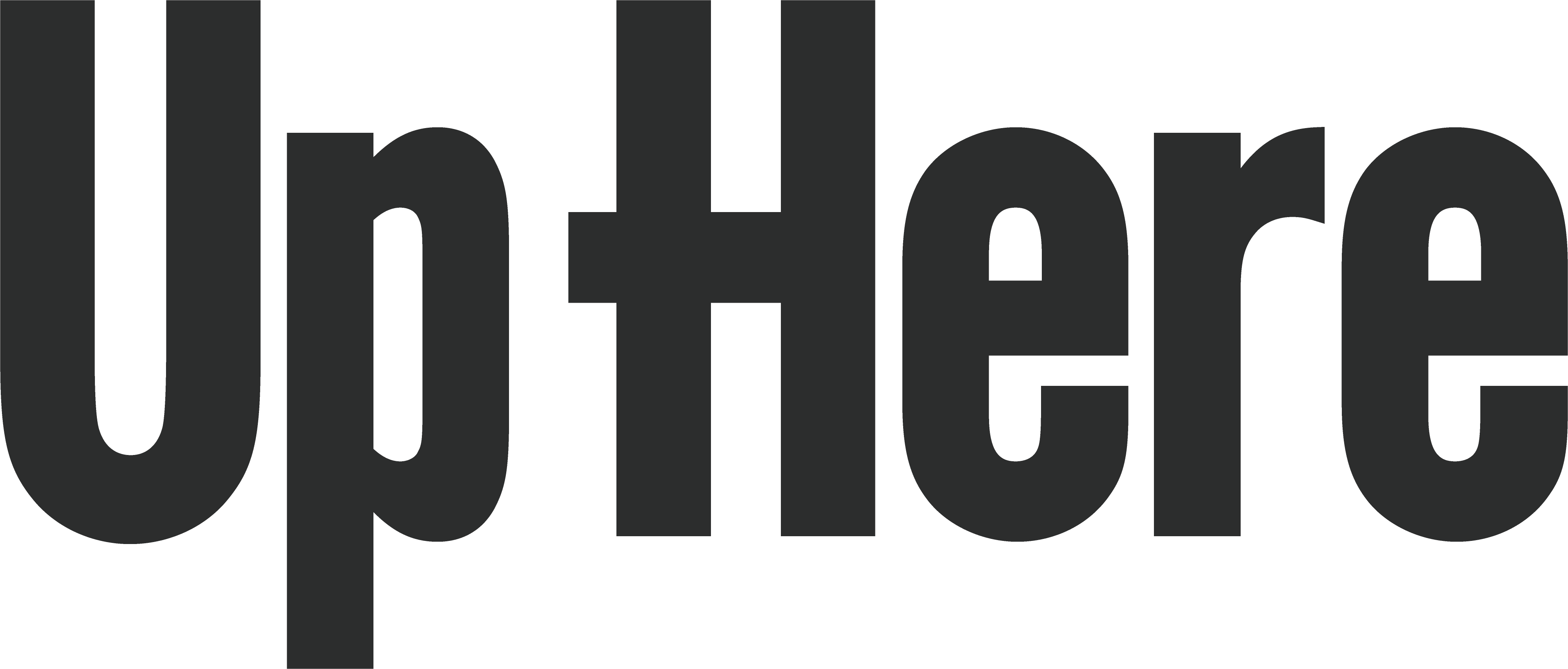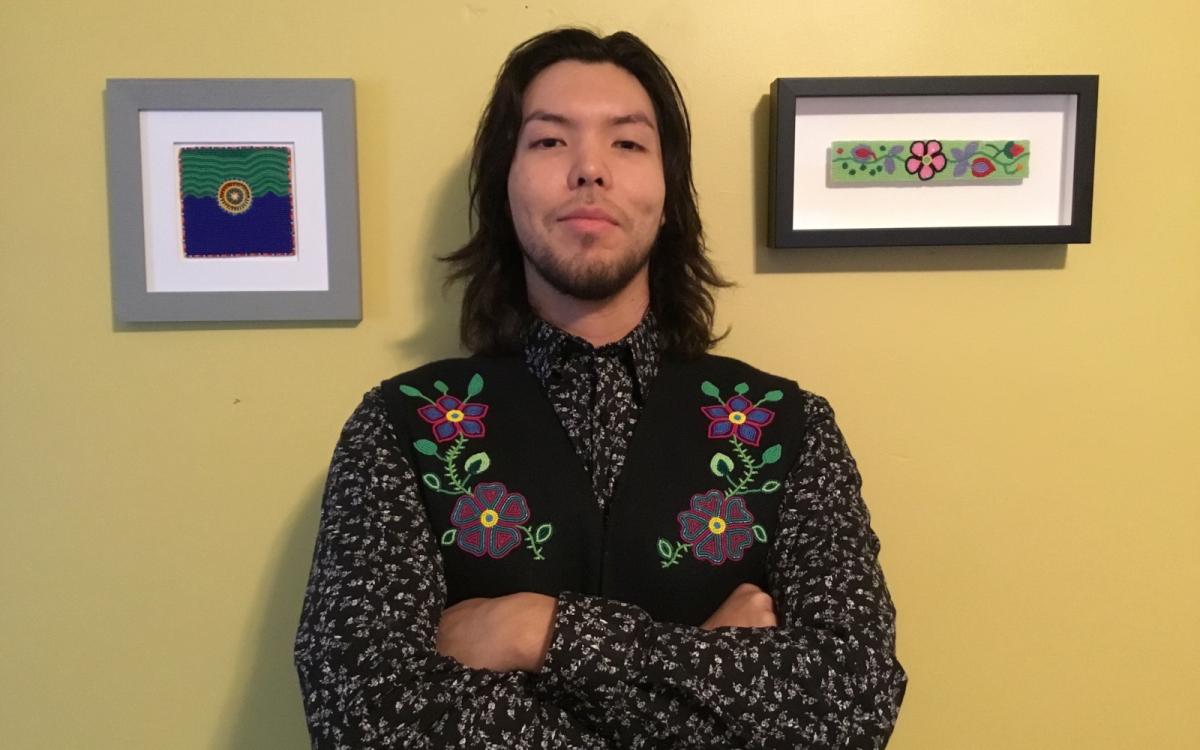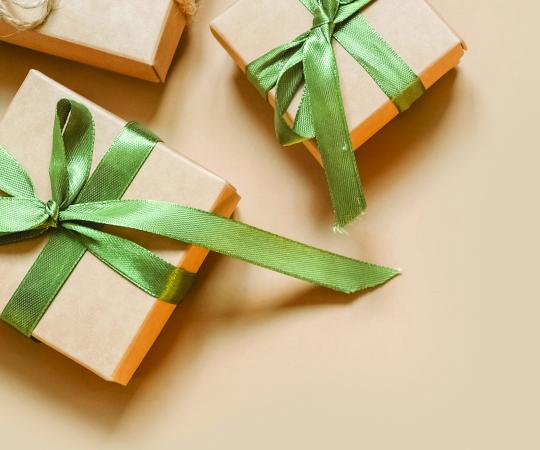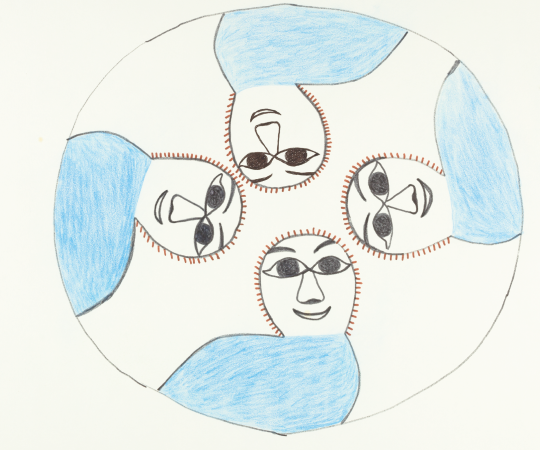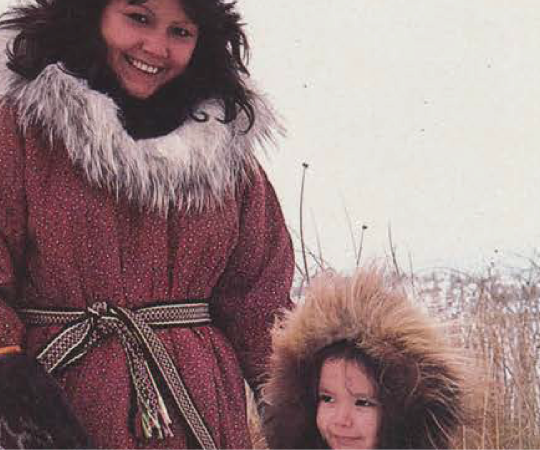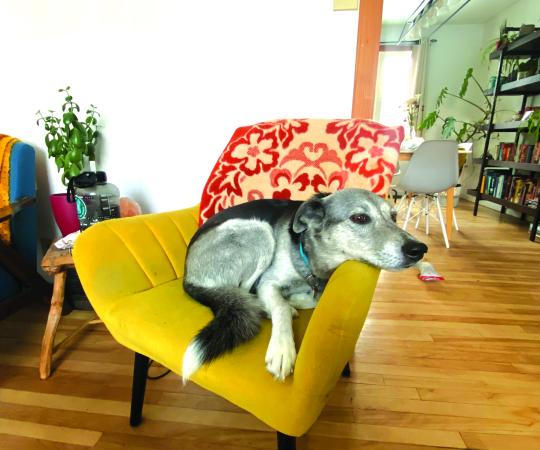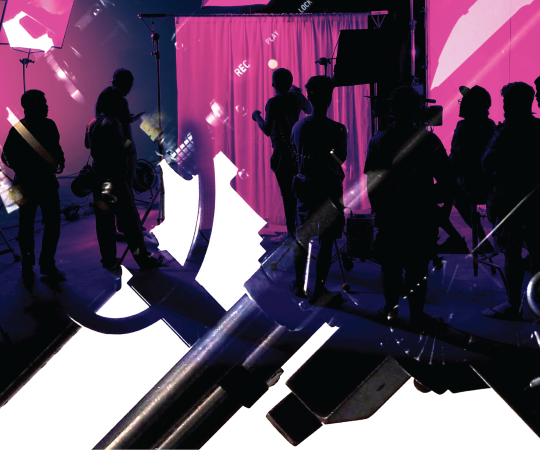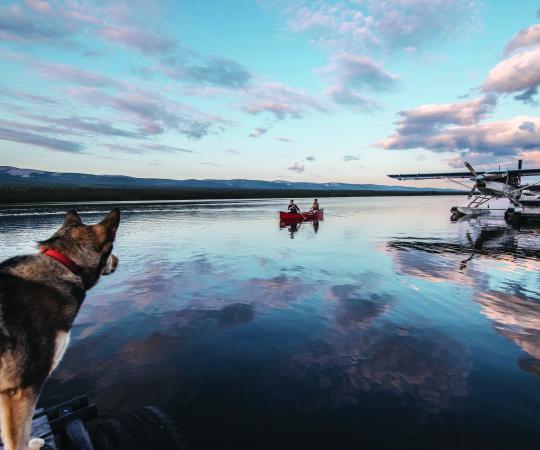When Matthew Vukson’s mom first asked him if he’d like to learn how to bead, he said no. “I told her I didn’t think I’d ever get into that,” he laughed. “It’s not something a man would do.” In his Tłįcho Dene heritage, he believed, traditional gender roles ascribe sewing and beading mostly to women.
But he found his way to beading anyway. Some artists are born, after all, and some are made - through a slow, sometimes years-long coming to terms with their own irrepressible urge to create.
“There were events that helped my attitudes to change,” he says, “and I learned to embrace what I grew up with, what my ancestors did, what was always around me, which is beading.”
In 2016, he left his job as an underground miner at Snap Lake Diamond Mine, a remote fly-in/fly-out location roughly 300 kilometres north of his home community of Behchokǫ̀ in the Northwest Territories. The mine was closing, giving him a new opportunity to explore his potential. He moved to Brantford, Ontario, where his mom lived. She was about to attend a beading workshop for survivors of residential schools and she invited him to go with her.
There, at the Woodland Cultural Centre in Brantford, he encountered the art and activism of Samuel Thomas, a member of the Lower Cayuga Band of the Iroquois Nation. An internationally acclaimed artist, Thomas is working to resurrect ‘lost’ Indigenous beadwork techniques from the 18th and 19th centuries. One of the locations for Thomas’ project Opening Doors to Dialogue was Brantford. Thomas invited participants to mount their beadwork on actual doors removed from many of Canada’s remaining residential schools.
It was a powerful and emotional experience, not only to be taught by Thomas, but to witness the power of beading to heal painful memories. Not long after, his mother, Celine Mackenzie Vukson, began teaching him the Dene method of appliqué, also known as two-needle beading. He was inspired and ready to learn.
Today, his studio resembles that of a colour-scientist. Vials and jars of beads in every possible hue line the shelves. Test-tubes containing vintage and modern beads are scattered across his table. Colour wheels are affixed to the walls. “The freedom of colour appealed to me right away,” he says. “In beading, stories are told by patterns but colours give stories depth and feeling.”
“Physically, it is very meticulous, and very draining,” says the 34 year old. In a demonstration video he posted to Facebook, he picks up six purple beads with the tip of his sewing needle. Holding them on the fabric with this thumb nail, he stitches each one into place.
What sets Dene beadwork apart from other forms of the craft, is this painstaking process. Every single bead is secured, resulting in final patterns that lie very flat on the hide or fabric. It is widely acknowledged in craft circles that Dene quality is second to none. Floral-patterned beadwork thrives in communities like Behchokǫ̀, and is increasingly practiced by younger generations. Family patterns are often shared and passed down from matriarchs to daughters and nieces, and occasionally, apparently, to sons.
“No, I’ve not received any flak for being a male beader,” he says, acknowledging that in the North, gender roles are slowly changing. Besides, he says, “Back in the day, when men were on the land for four, five months at a time, they would have needed to sew to make quick repairs to their mukluks. Maybe we don’t really talk about it, but men definitely had to sew. It was about survival.”
Matthew is naturally forward-thinking, so perhaps it is no surprise that he has taken the traditional skill he learned from his mother to forge new paths into street fashion and contemporary art.
His own geometric designs, for cuff bracelets and caps, use sophisticated colour gradations, most often in moody purples and blues. His freeform beadwork pieces echo the fluid lines in paintings of the Woodlands style, such as those by Norval Morisseau. But his most radical departure from tradition is a series of thirteen heavily symbolic sculptural pieces, exhibited recently at Daphne, an Indigenous art gallery in Montreal, Quebec.
The pieces, which include a beadwork guillotine, a cross, handcuffs, police badges, and a noose, “speak of brutal responses to the Indigenous body,” states the gallery text. These are balanced by beaded images “that center Indigenous cosmologies as a source of healing and nurturance.” His sculptural objects portray oppression and control. In contrast, his freeform compositions of forests, flowers, and northern lights become portrayals of endurance and resilience. The pieces are also about overcoming personal struggles, says Vukson. “I hope they have a message about finding our own paths, our own ways forward.”
Vukson opened 7th Fire Bead Designs in 2018, a business that seeks to remove barriers to the transfer of traditional knowledge, teaches beading workshops, organizes craft sales, and helps lead storytelling and drumming events. His next exhibition will be held in Yellowknife, in May, 2023.
“Beading takes a lot out of your spirit,” he continues. “It invokes a lot of feelings from my ancestors, from my family. Sometimes when I’ve done beadwork I’ve just started crying because I’m so happy to be alive, to do things I enjoy, and to see the outcomes.”
